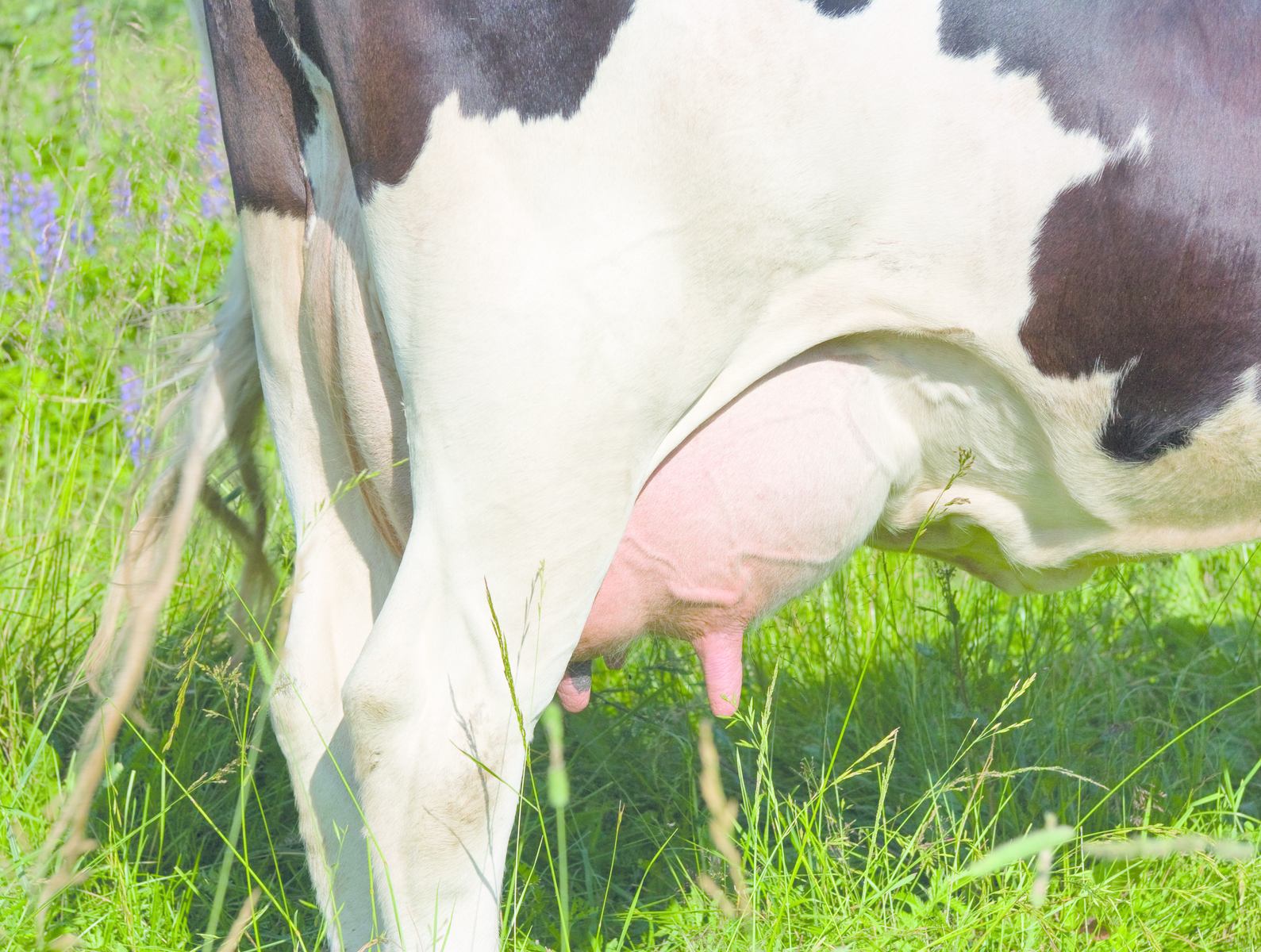Toxic contamination: Effect on rumen and liver function

Feeding dairy cows with mycotoxin contaminated feed causes a range of problems starting from reduced feed intake, impaired milk production, reduced reproduction and lower immunity. Altogether, they might be responsible for significant economic losses.
By Stephan Bauwens, technical director, Innovad, Belgium
Moulds and mycotoxins, sudden increase of the outside temperature, pathogens, changes in the diet, the transition period and calving. These are all are stress factors that compromise the cow’s immunity and its ability to deal with possible diseases, caused by immune suppression. As a result, farmers can be confronted with higher somatic cell counts, lower milk yield, poorer reproduction performance, mastitis and metritis. In the case of mycotoxins, dairy cows can come in contact with deoxynivalenol (DON), Zearalenone, Aflatoxin B, Ochratoxin A and T2-toxin & PR-toxin. But also ergot alkaloids and silage-associated Roquefortin C and Mycophenolic acid can be of great concern. Their negative impact is amplified by a negative energy balance and/or a high productive stress. However, a contamination within the cow often starts unnoticed. Within days or weeks, the effect of continued mycotoxin ingestion on performance becomes more pronounced; although symptoms remain variable and mycotoxin induced diseases seldom respond if at all to veterinary therapy.
Rumen does not always protect
Ruminants are generally considered to be less susceptible to the adverse effects caused by mycotoxins. The rumen fluid (with protozoa and rumen bacteria) serves as a detoxifying barrier for certain mycotoxins (Ochratoxin A, Zearalenone, T-2 toxin, Diacetoxyscirpenol and Deoxynivalenol). For this reason, the rumen has long been considered as a very strong buffer against the possible negative impact of mycotoxins. However, other aspects should be taken into account before disregarding mycotoxins’ hazardous effects in ruminants. This is because not all toxins are degraded or transformed. Aflatoxin, being most known for its transition as Aflatoxin M1 in milk, is hardly transformed and passes the rumen for approximately 90%. The other way around, transformation of mycotoxins in the rumen environment is not always equivalent to reduced toxicity. 90% of Zearalenone (ZEN) can be converted to a-Zearalenol, which is ten times more toxic then its’ parent toxin itself.
It should therefore always be considered that mycotoxins will adversely impact rumen environment and activity even before having an effect on the animals themselves. Decreases in ruminal motility, on DM, ADF and starch digestion and on microbial growth are some of the impacts seen in animals fed mycotoxin contaminated diets, directly impacting production and indirectly initiating other metabolic disorders. Additionally, toxins like Aflatoxin and Deoxynivalenol reduces feed intake and by consequence further nutrient supply. In dairy cattle, T2-toxin has been associated with intestinal haemorrhage, bloody faeces, gastro-intestinal lesions and enteritis, finally disrupting the digestive process in the lower part of the digestive tract.
Liver damage and lameness
Reproduction and fertility are the cornerstones of modern dairy farms’ economics. But these can be compromised significantly by the presence of ZEN. Swollen vulvas, vaginal or rectal prolapses can be observed as well as lower conception rates, mastitis or abortions. Crucial organs, like the liver, are stressed and damaged by the aggressiveness of the mycotoxins (Aflatoxin and Fumonisin) after absorption, while immune function is compromised by most of the already mentioned toxins. Both, the liver and the immune cells, have a very high metabolic activity which makes them extra vulnerable for oxidative stress by aggressive molecules such as these. In addition, the liver of dairy cows during early lactation is exposed to specific extra stresses.
Low concentration of glucose and insulin in the blood and increased influx of free fatty acids lead to fat deposition in the liver. Moulds and mycotoxins can exacerbate this further by reducing the feed intake of the animals. Oxidative stress is an imbalanced ratio between free radicals (endogenously or exogenously produced) and the natural existing anti-oxidant system for free radical neutralisation.
Considering that mycotoxins are among the most important exogenous stress factors that might create increased oxidation rates in tissues and cell structures, it has to be considered that important organs such as blood, liver, kidneys, etc. might get affected by the aggressiveness of these molecules which results in impaired functionality. Mycotoxins have a significant immunotoxic potential, depending on the type and degree of exposure. Gliotoxin produced by A. Flavus acts as immunosuppressive and T-2 toxin inhibits phogocytosis by macrophages. Cows in phases of stress as in early lactation are particularly susceptible to mycotoxins because their immune system is already overtaxed. The system is less stressed when vital organs such as the liver are fully functional.
Another aspect worthwhile mentioning is the higher incidence of lameness on dairy farms contaminated with mycotoxins. Lameness alone in dairy farms already causes large financial losses due to a decreased milk production, impaired reproductive performance and higher culling and veterinary costs. In a study conducted in 2005 by Özsoy S, et al., a positive relationship was established between aflatoxin contamination of feed, lameness (subclinical laminitis) and impaired fertility (cystic ovaries).
Combined approach
Research and practical experience has proven that there is no single method for effective mycotoxin control, but many agree that mycotoxin management in the diet is a valid insurance policy. The best way to counteract problems related to mycotoxins might lay in the combination of actives, partially focusing on direct mycotoxin absorption and/or transformation, while ensuring metabolic support at the same time. Metabolic support should emphasis on maintenance and balancing the rumen micro flora, oxidative stress management, essential organ support and immune stimulation. The effect of a product on milk production can be seen in Table 1. The product has a combined approach due to the different ingredients. It contains herbal ingredients with proven liver protective characteristics, polyphenols helping counterattacking oxidative stress, fermentation extracts maintaining rumen functioning and cellulolytic bacteria activity and its other clays and polymers. It should be emphasized that farmers and nutritionists should be proactive when dealing with mycotoxins and moulds in dairy feed. Keep an eye on feed intake. Check the silo regularly. Mycotoxins in dairy feed rations in a problem that is more easily prevented than cured.
Myth: Dairy cows are not at risk because they can deal with mycotoxins better.
Fact: Because ruminants consume forages, by-product feeds and wet feeds, they are exposed to a broader range of mycotoxins at concentrations that are perhaps higher than are found in dry grain mixtures. Potential reasons for the unknown risk are multiple. Silages are less frequently traded; they are more heterogeneous and present sampling and analytical challenges. An understanding of possible risks, for this part of the diet in particular, is important for realising consistent production, protecting animals health and well-being and improve farm economics. Under normal conditions, a multiple-toxin contamination is likely. Multiple toxins can have a synergistic effect, increasing the negative impact on animal’s performance and health. Toxins from mold and fungus combined with bacterial toxins increase the negative health issues significantly.
Myth: I tested for mycotoxins and my feed shows to be free from mycotoxins.
Fact: Feed analyses of mycotoxins are hindered by the difficulty in gathering representative feed samples because mold growth is inconsistent, and mycotoxins are non-uniformly distributed within a feedstuff. Not all mycotoxins can be detected in routine testing by commercial laboratories. However, a more likely scenario is to find mycotoxins at lower levels interaction with other stressors to cause subclinical losses in performance, increases in incidence of disease and reduced reproductive performance. To the animal producer, these subclinical losses are of greater economic importance than losses from acute effects, but even more difficult to diagnose.











